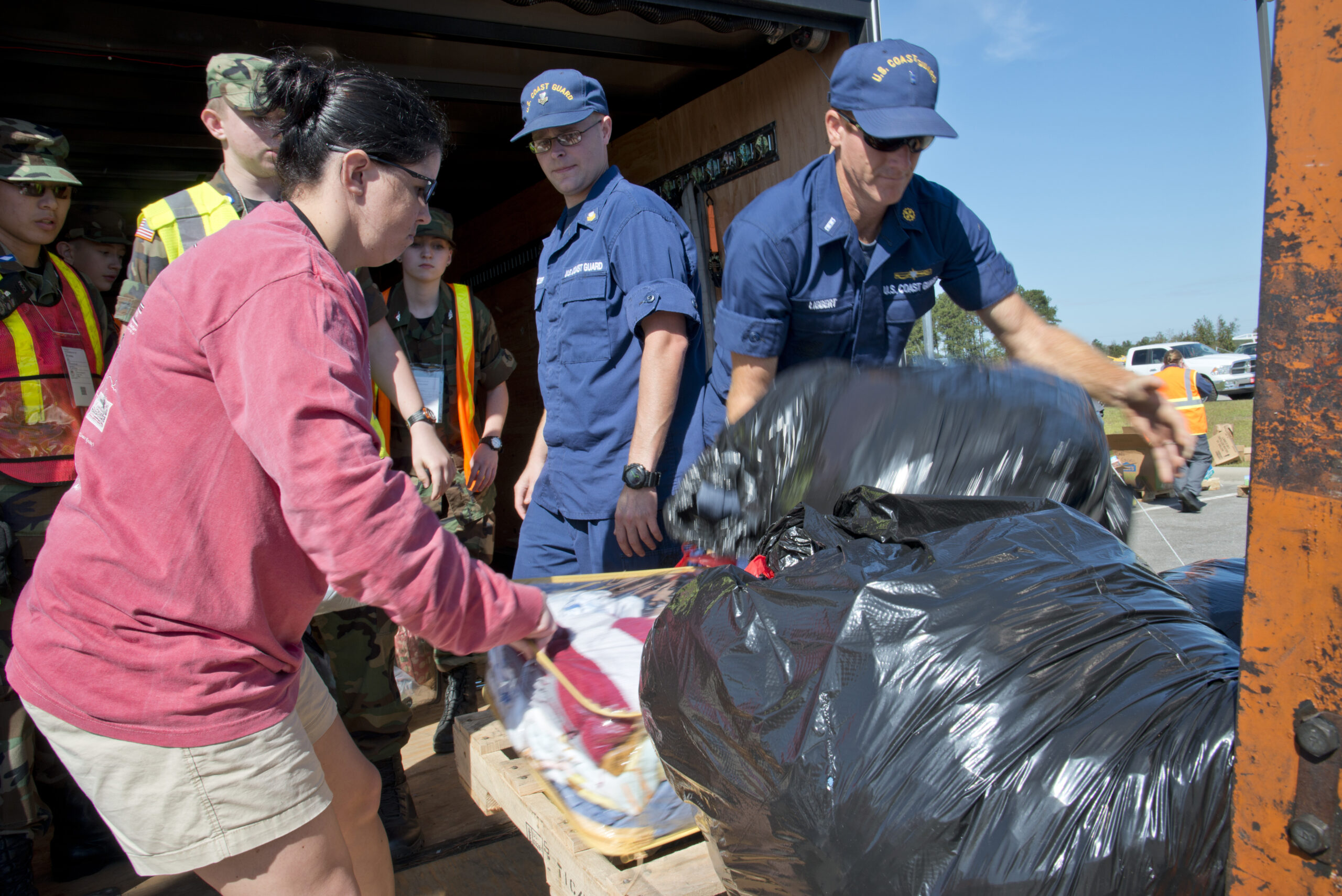Flooding, Hurricanes, and Community Perspectives
Carteret County and Ocracoke, North Carolina
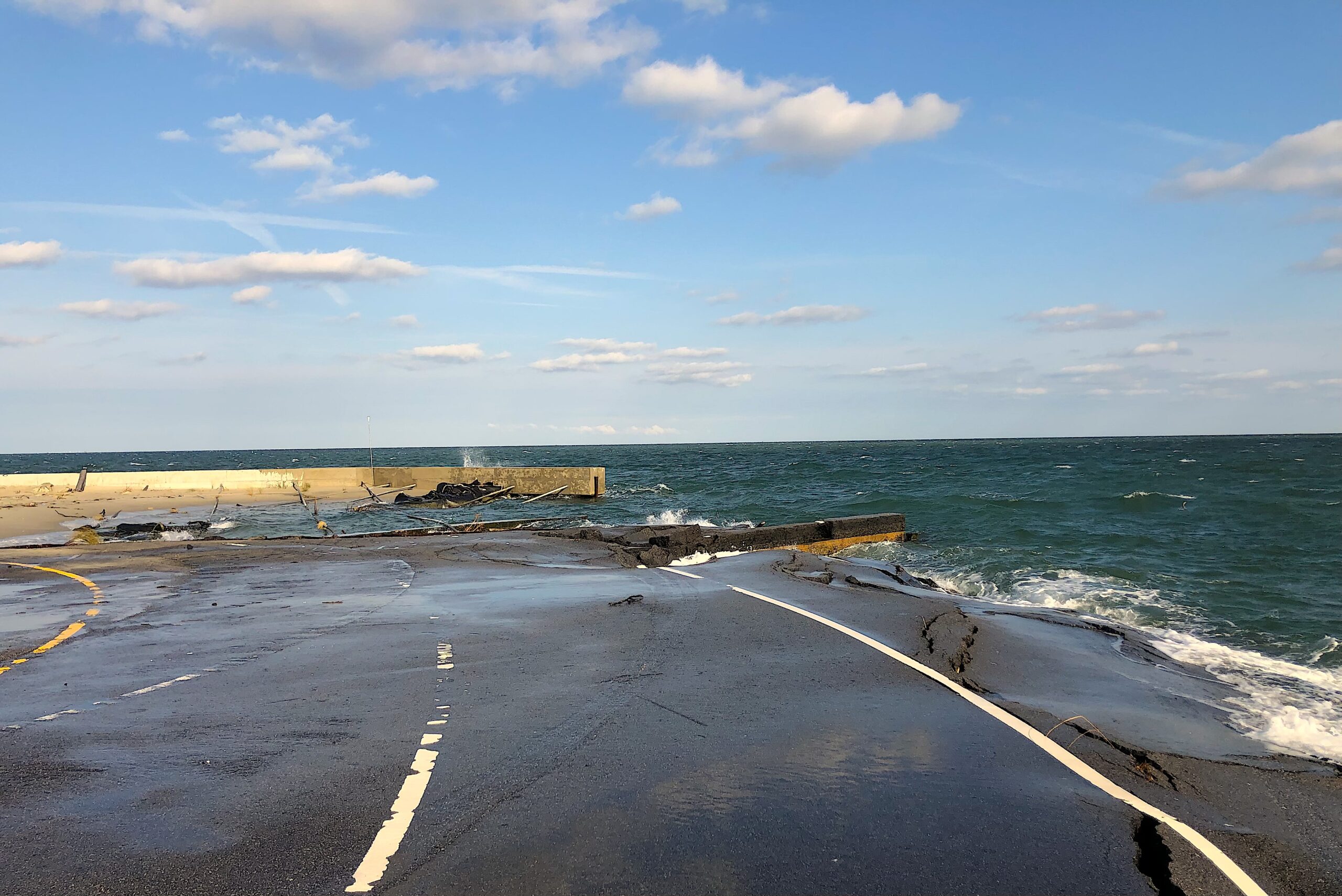
“If you’re really trying to make change in a place, you have to know the people. Otherwise, it’s just not going to work.”
New research suggests that many coastal North Carolina residents worry about more frequent flooding and intense hurricanes — and the impacts on their lives and communities.
NOAA recorded six days of high tide flooding at the Beaufort Duke Marine Lab tide gauge in 2022, but this number could increase to as many as 60 days a year by 2050. During that same time frame, scientists project sea levels will rise by 10 to 14 inches along the East Coast.
More frequent and more intense storms compound the effects of sea level rise. From 2001 through 2020, hurricane intensification rates increased by 28.7% when compared with 1971 through 1990, and Hurricane Helene was the second catastrophic “1,000 year event” to hit North Carolina in just the past six years.
The effects of sea level rise, more intense storms, and more frequent flooding extend beyond the most immediate impacts — they also reshape the coastal landscape. According to a Sea Grant study from the Marine Biological Laboratory in Woods Hole, Massachusetts, the majority of the world’s salt marshes will be underwater by 2100.
While researchers and policymakers study the statistics and science behind mitigation and resilience strategies, for such strategies to be effective, scientists also have to take into account the perspectives of the communities that need to adapt.
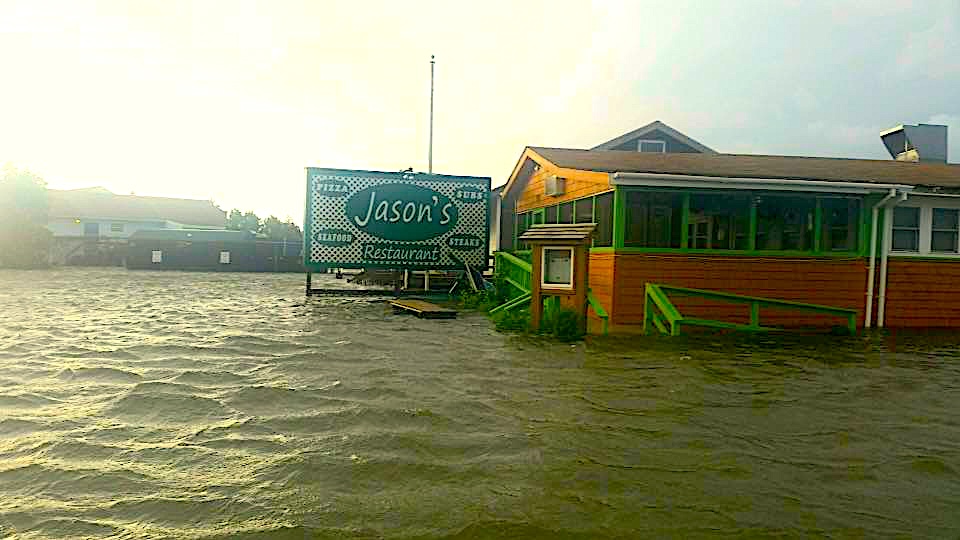
Two new research projects focus on the intersection of climate and community perceptions, planning, and policy. North Carolina Sea Grant and the North Carolina Water Resources Research Institute’s joint Mountains to Sea Graduate Research fellowship funds both — and both projects also share an emphasis on community engagement.
What They Say in Ocracoke
Bevin Hardy is studying how the climate has impacted Outer Banks residents — and what they think of those impacts.
Hardy, a Ph.D. student at the University of North Carolina at Chapel Hill, approaches environmental issues through an anthropological lens. She is investigating community perceptions in Ocracoke, including residents’ current and imagined future responses to climate and other stressors. As she has developed relationships with residents and gained insights from them, she has been able to explore the resilience of this tight-knit community and its members’ strong attachment to the place they call home.
Climatologists, natural scientists, and policymakers often bring a data-heavy perspective to research and adaptation efforts. But Hardy says a focus on the numbers can obscure crucial insights from residents who face severe events like flooding and hurricanes.
“Climate change research is really dominated by the quantitative side,” says Hardy. “And it’s missing that qualitative piece, which can take more time and more effort.”

Hardy’s research involved living in Ocracoke for a year, immersing herself in the local community in order to gather residents’ perspectives first-hand. She found that a focus solely on the negative effects of climate runs the risk of alienating a community with deep ties to the place they live.
“I had to sort of shift away from just the sole topic of climate change,” she says, “because I didn’t want people to think I was coming in and trying to create a case for why they shouldn’t be there or looking at them through that one lens.”
That’s not to say that residents are unaware of the increasing threat climate impacts pose. Hardy conducted a survey in which 70% of respondents identified climate as a major concern for the future of the island. Hurricane Dorian, for instance, severely impacted Ocracoke in 2019, resulting in significant property loss and the displacement of families and local businesses. In the wake of the hurricane, residents have worked to rebuild, repair infrastructure, and develop community support initiatives to bounce back from the effects of the storm.
Hardy says that research teams who come to Ocracoke with a more limited focus aren’t as successful in making inroads with residents. “They’re not engaging with the community or thinking about the human implications,” she says.
Without that connection, she adds, it’s difficult to come up with solutions that work not only theoretically but in practice.
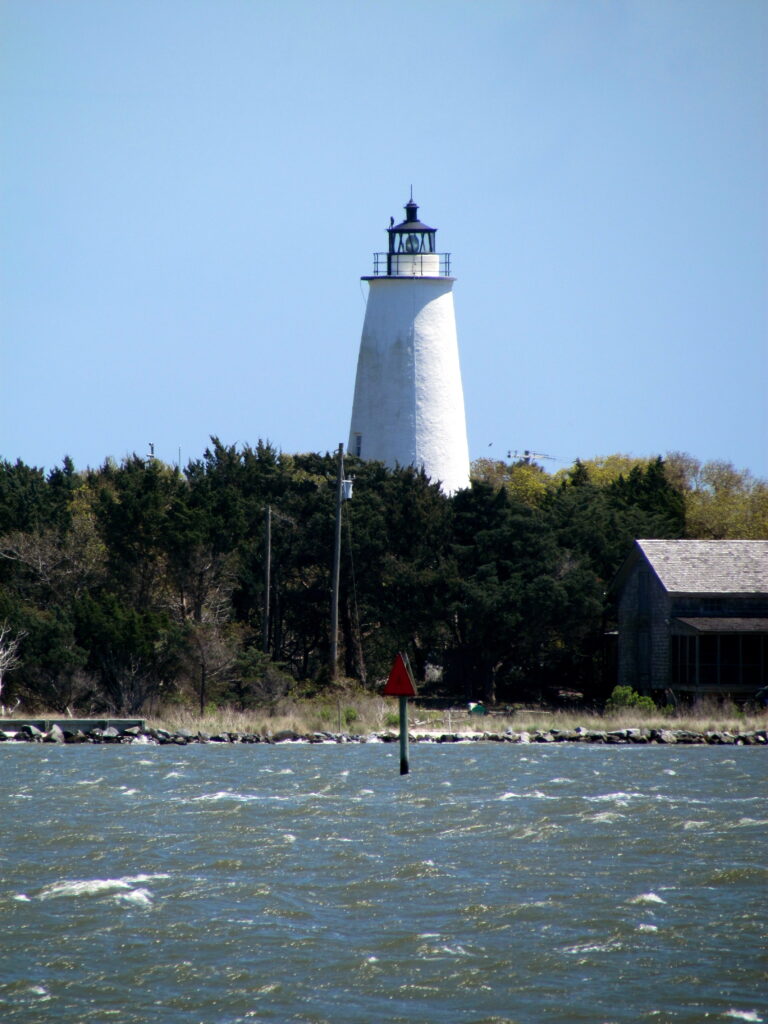
“I know about climate change,” she says. “I know the science side. But I don’t know if we prioritize the human side of it as much. If you’re really trying to make change in a place, you have to know the people. Otherwise, it’s just not going to work.”
For researchers without a personal connection to Ocracoke, it can be difficult to understand the perspective of residents with generations of history that have resulted in a unique attachment to the island.
“Although it might not make sense to people who don’t live there why people would stay, or why they continue to build there,” says Hardy, “there are so many things that are just really special and worth conserving.”
Hardy prefers an approach that balances an assessment of risks with a celebration of the unique and irreplaceable characteristics that define a community.
“When we talk about climate change, sometimes it can seem so ‘doomsday,’” she says. “We talk about these things as if they’re inevitable. I think it’s always really important to remember that the people in these places don’t necessarily have the same perception that climate change has to be a death sentence for a community. I think that piece gets lost.”
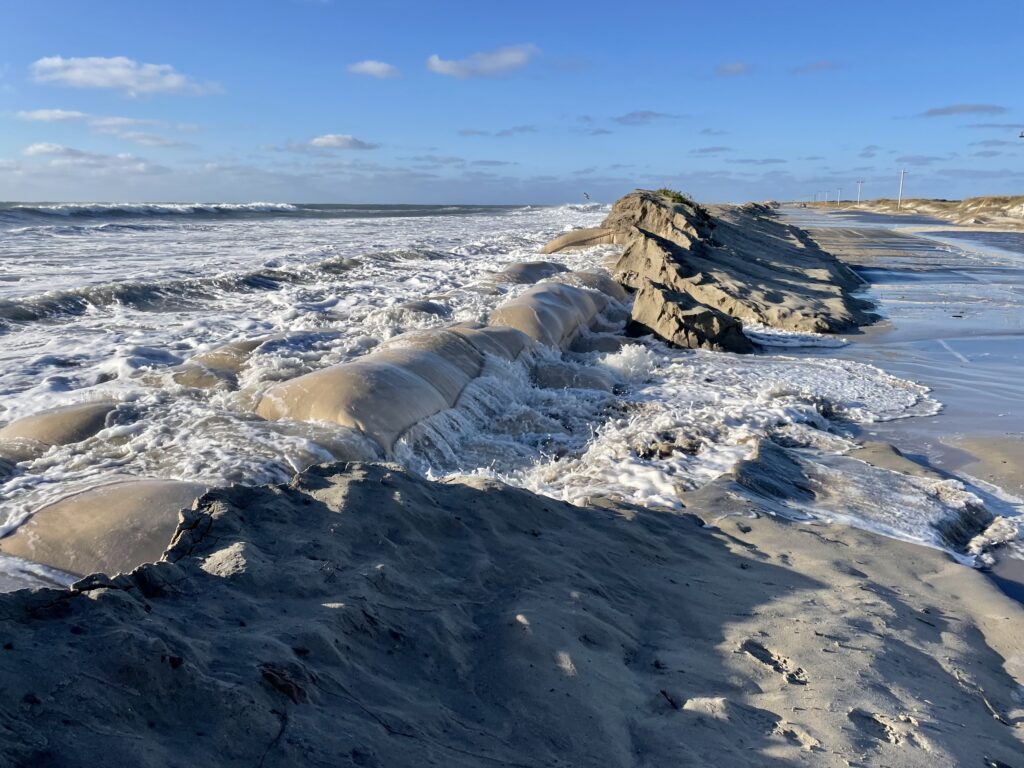
The results of Hardy’s study will help researchers understand the risks of most concern to residents, which can inform resilience strategies going forward.
“I’m motivated to make sure that what comes out of this research is going to be beneficial to the community,” she says. She plans to host both formal and informal gatherings at the local community center and to share her findings with county and state policymakers, as well as with other groups.
Hardy says her research already has made her more optimistic about the resilience and resourcefulness of communities facing increasing climate impacts.
“It makes me feel a little more hopeful,” she says. “There are a lot of beautiful things happening in these places.”
The Value of Salt Marsh in Carteret County

Mary-Margaret McKinney, a PhD student in the Department of Coastal Studies at East Carolina University, is researching salt marshes in central coastal North Carolina through the eyes of landowners.
Salt marshes play a key role in North Carolina’s coastal ecosystem: they reduce erosion and flooding, purify water, and sequester carbon. Marshes also are important for tourism, recreation, and education. But due to coastal development and rising seas, North Carolina may lose 83% of its existing coastal marshes and 26% of existing seagrasses over the next 80 years.
“We know, as scientists, any number of reasons why we need a certain ecosystem,” says McKinney. “But I feel very strongly we have ignored the role the residential landowner plays in the retention of salt marsh on the coast.”
McKinney says a constellation of factors motivate property owners, including aesthetics and appearance, safety, cost, and convenience, in addition to environmental concerns.

To better understand coastal perspectives, McKinney conducted a survey and a series of follow-up interviews in Carteret County. Her early results include a few key findings.
“My interviews revealed that respondents who understand the values and functions of a salt marsh were more likely to find benefits and less likely to find negatives in having salt marshes along the edge of residential lawns,” McKinney says.
Perhaps unsurprisingly, respondents with pro-environmental beliefs were more likely to perceive lawns without salt marsh as unattractive. According to McKinney, pro-environmentalism wasn’t associated with any demographic variable, though, like income or education.
But, she says, the proportional amount of time that a person has spent residing at the coast may play a role in shaping attitudes toward salt marshes.
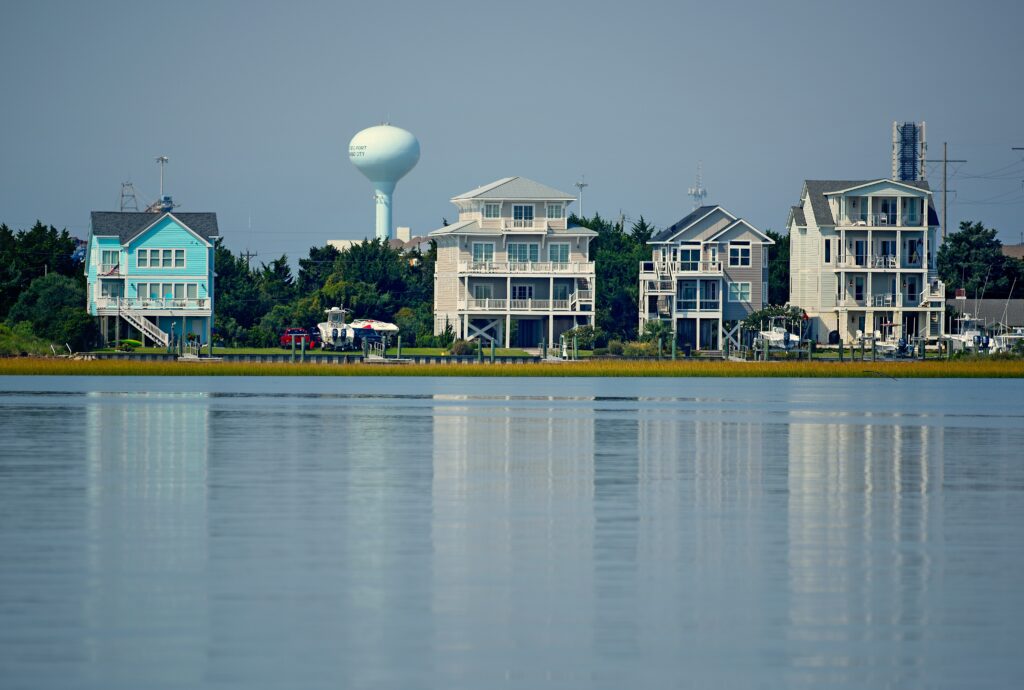
“Respondents who have lived a larger percentage of their lives in a coastal area were also more likely to perceive lawns without marsh as unattractive and unnatural,” she explains.
Overall, she adds, respondents had favorable views towards salt marsh, viewing lawns with marsh as more natural and less in need of improvement than lawns without marsh.
With its emphasis on community attitudes and preferences, McKinney’s project, like Hardy’s, exemplifies an approach that can find common ground as climate impacts increase. As North Carolina’s coastal communities continue to experience more frequent and severe storms, as well as accelerated sea level rise, these researchers’ timely work can help foster important new collaborations.
More
Vital Signs: Most of World’s Salt Marshes Likely Will Be Underwater by 2100
Migrating Marshes Reveal Sea Level Rise and Human Activity
Sea Science: Which Wetlands Will Survive?
New Sea Level Rise Projections for North Carolina
The Impact of Sea Level Rise on Tidal Marshes
50-Year Trend in Atlantic Hurricane Escalation
The Guide to Coastal Living: Storm Readiness and Recovery Basics
Community Collaborative Research Grants
Lead photo: Ocracoke Island.
Credit: Cape Hatteras National Seashore.
Margaret Wack is a graduate science communication intern with the North Carolina Water Resources Research Institute. In addition to her work with WRRI, she is also a Ph.D. student in Literature and Creative Writing at the University of Utah.
- Categories:

